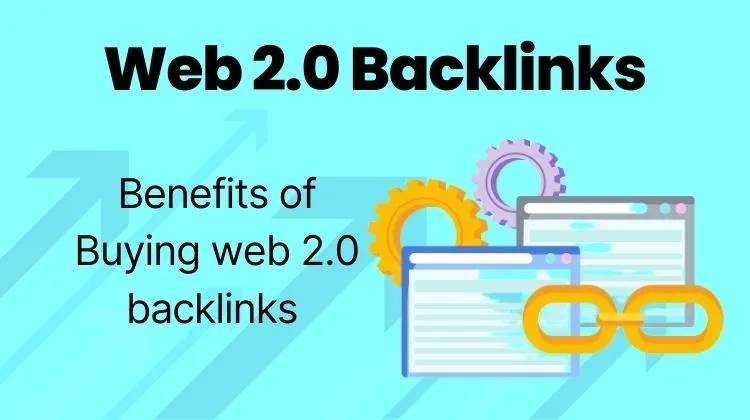In the constantly shifting landscape of search engine optimization, web 2.0 backlinks have emerged as a potent tool for boosting website authority. Unlike traditional backlinks, these links originate from platforms that allow users to create content-rich profiles or blogs, providing unique opportunities for brands to amplify their online presence. Businesses and SEO enthusiasts alike are scrambling to understand how to harness this dynamic strategy effectively.
What Are Web 2.0 Backlinks?
At its core, a web 2.0 backlink is a hyperlink embedded within content hosted on platforms like WordPress, Blogger, or Medium. These platforms enable users to craft original content, often with personalized domains or subdomains, which then link back to their main websites. This approach not only diversifies a website’s backlink profile but also injects authority and relevance in the eyes of search engines.
Unlike standard link-building methods, web 2.0 backlinks thrive on quality and contextual relevance. Search engines increasingly reward backlinks that arise from content with genuine engagement, rather than mass-produced links from low-value directories.
How to Acquire Web 2.0 Backlinks
Securing web 2.0 backlinks isn’t merely a numbers game—it requires a calculated approach. Here’s a breakdown of strategies to accumulate high-quality backlinks without triggering search engine penalties:
1. Identify High-Authority Web 2.0 Platforms
First, scout platforms that offer credibility and user trust. Popular choices include WordPress, Wix, Blogger, Weebly, and Medium. Using these platforms ensures your backlinks are nested in environments recognized by search engines, boosting their impact.
2. Craft Engaging, Original Content
Once the platform is selected, create articles or posts that provide genuine value. Avoid generic fluff; instead, narrate experiences, share actionable tips, or analyze trends. By weaving your main website’s links naturally into informative content, you stimulate organic engagement and clicks.
3. Diversify Anchor Text
Overusing exact-match anchor text can appear spammy. Experiment with branded anchors, partial matches, and long-tail phrases to maintain a natural backlink profile. This tactic not only safeguards against penalties but also enhances the relevance of your links for varied search queries.
4. Leverage Multimedia Elements
Incorporate images, infographics, videos, or charts in your web 2.0 content. Multimedia attracts attention, increases dwell time, and encourages social sharing—amplifying the SEO benefits of your backlinks.
5. Update and Maintain Your Content
Web 2.0 backlinks are not “set it and forget it.” Refresh posts periodically with new information, updated statistics, and additional links. This continual nurturing signals to search engines that your content remains relevant and authoritative.
Benefits of Web 2.0 Backlinks
The advantages of integrating web 2.0 backlinks into your SEO strategy are multi-faceted:
- Enhanced Domain Authority: Links from respected platforms increase the perceived value of your main website.
- Improved Search Rankings: Contextual and quality backlinks influence search engine algorithms positively.
- Greater Content Reach: Web 2.0 platforms often have built-in audiences, amplifying your content’s visibility.
- Diverse Link Portfolio: A mix of backlink sources demonstrates natural growth, which search engines favor.
Conclusion
Web 2.0 backlinks are no longer a fringe tactic—they are a mainstream pillar of effective SEO. By carefully selecting platforms, producing engaging content, diversifying anchor text, and consistently maintaining posts, brands can cultivate powerful backlinks that elevate visibility and authority. As search engines continue refining their algorithms, strategic use of web 2.0 backlinks will likely remain a top-tier strategy for digital marketers.
Frequently Asked Questions (FAQ)
Q1: Are web 2.0 backlinks still effective in 2025?
Yes. When created with quality content and relevance in mind, web 2.0 backlinks continue to bolster domain authority and improve search rankings.
Q2: Can I automate web 2.0 backlink creation?
While automation exists, it often produces low-quality links that could harm SEO. Manual creation ensures higher-quality, contextually relevant backlinks.
Q3: How many web 2.0 backlinks should I aim for?
Focus on quality over quantity. Even a few authoritative backlinks are more valuable than hundreds of low-quality links.
Q4: Should I use the same anchor text for all backlinks?
No. Diversifying anchor text reduces spam signals and enhances keyword relevance across search queries.
Q5: Which platforms are best for web 2.0 backlinks?
Popular high-authority platforms include WordPress, Blogger, Medium, Wix, and Weebly, but always ensure the platform aligns with your niche.



